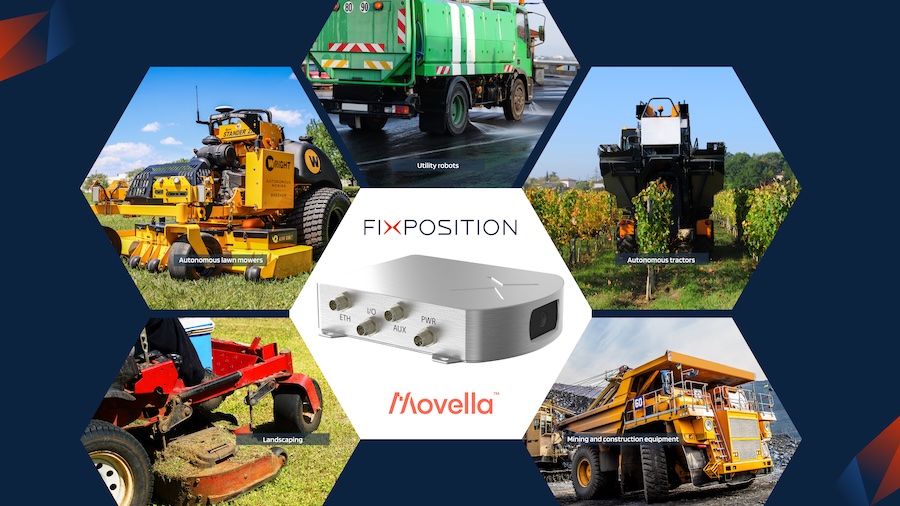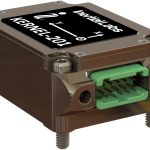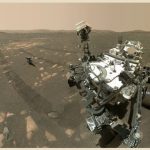Movella and Fixposition are working together to create GNSS inertial navigation systems (INS) that leverage visual inertial odometry, with the goal of accelerating their development and commercialization.
As a first step, Movella recently added Fixposition’s Vision-RTK2 to its offerings, naming it the Xsens Vision Navigator and opening up the distribution network for the product starter kit. This is Movella’s first product that leverages visual inertial odometry.
“The partnership brings together the combination of the quality and reputation of the Xsens range of inertial sensor modules with Fixposition’s vision fusion technology that helps to remove the time-accumulated drift in inertial navigation systems,” Fixposition CEO Zhenzhong Su said, according to a news release about the partnership. “We believe this allows Fixposition to expand its market reach much faster by aligning with Movella’s extensive global sales channels and market reach.”
Improved accuracy
The Xsens Vision Navigator integrates position inputs from three high accuracy sources: dual-antenna RTK GNSS receivers that can receive signals from all constellations; an inertial measurement unit with a three-axis accelerometer, three-axis gyroscope and magnetometer; and a visual inertial odometry system. The solution also can accept inputs from an external wheel speed sensor.
The positioning sensor achieves centimeter-level accuracy when operating in GNSS mode with an RTK fix. It also can achieve an accuracy of 2% of travel distance, or 0.75% when supplemented by wheel speed, in GNSS denied environments. In open field, orientation accuracy is 0.4 degree with one meter baseline between two GNSS antennas. Velocity measurements are accurate to ±0.05m/s.
“Adding visual inertial odometry technology complements the high-accuracy positioning of the current GNSS-enabled modules,” according to Fixposition, “producing very low drift over time, and excellent dead reckoning results over distance in GNSS-deprived areas.”
The solution can be used for a variety of applications in challenging outdoor environments, including materials handling equipment, last-mile delivery, inspection equipment and drones, agricultural equipment, mining and construction equipment, and utility robots.
A closer look at the technology
Combining visual inertial odometry with RTK GNSS sensors helps overcome some of the limitations of traditional RTK GNSS INS systems. For example, visual inertial odometry sensors are distance-dependent rather than time-dependent on drift, allowing them to excel on the slow-moving platforms found in ground robotics.
“A small robot like a lawnmower experiences a lot of vibrations but limited actual inertial measurements,” according to Fixposition. “If a positioning system has to rely on IMU based measurements only, this low signal-to-noise ratio has a negative impact on performance if no visual data is used.”
While high-quality wheel odometry can have a positive impact on these systems, they’re less dependent on them than traditional RTK GNSS INS solutions. This is an advantage for agriculture and landscaping use cases, such as tractors and lawn mowers, where wheel speed may not be available or isn’t trustworthy because of wheel slip.
Visual inertial odometry based systems also allow for an improved cost-performance ratio, according to Fixposition. Traditional RTK GNSS INS systems often require expensive high-grade IMUs. Adding visual odometry improves performance, while also allowing users to switch to a lower cost option.
To achieve the desired price-performance ratio, the hardware must be tightly integrated and the sensor fusion engine highly optimized. Fixposition spent years developing its deep sensor fusion engine, and, according to the company, proved its robustness “through tens of thousands of kilometers of testing.”
Next steps
The companies first began exploring a partnership in early 2022 and anticipate doing more work together in 2023.
“The combination of Fixposition’s visual technology with the outstanding Xsens IMU and GNSS+RTK performance gives extremely high dead reckoning performance in any outdoor application that has to operate in the temporary absence of, or degraded, GNSS signals,” Movella Vice President of Sensor Modules Peter Xie said, according to the release. “Additional vision-enabled Xsens inertial navigation products are in development and are scheduled for release in 2023.”
To give customers more flexibility and a better cost benefit ratio, the companies plan to develop a smaller form factor of the Vision-RTK2 that makes it easier to integrate into equipment like lawn mowers, agriculture vehicles and utility robots as well as into existing solutions such as sensors, cameras and GNSS antennas. There are also plans to launch additional subscription services later this year, such as post processing and mapping.
Interested system developers can evaluate the Xsens Vision Navigator with the Xsens Vision Navigator Starter Kit, which includes an Xsens Vision Navigator in its enclosure, an aluminum mounting system with suction cups, two dual-band GNSS antennas, a Wi-Fi® radio antenna, power, Ethernet, I/O and antenna cables, and a battery with charger.


 & Carnegie Robotics CTO Chris Osterwood (R).jpg)



